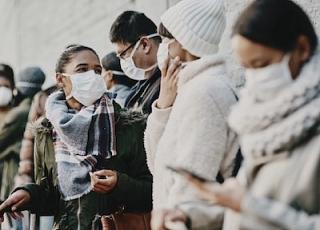
Author: Julie Kiefer
Even though COVID-19 vaccines are widely available in the U.S., it is still difficult for some people to get vaccinated. These disparities are taking a significant toll on some of the most vulnerable populations, leading to hospitalizations and deaths that could have been prevented. A team led by Nathorn Chaiyakunapruk, PharmD, PhD, in the Department of Pharmacotherapy at the University of Utah College of Pharmacy, examined strategies to minimize inequity in COVID-19 vaccine access. He explains what they learned and how this information could help in the future.
Why is it still hard for some people to get vaccinated?
There are a lot of different reasons. Sometimes there is a language barrier where people who don’t speak English as a first language have a hard time understanding who can get vaccinated, where to go, or why it’s important. Mobility issues are another example. People who live in long-term care facilities, are home-bound, or live in remote areas may have difficulty getting to vaccine clinics. For people who work and can’t take time off during the day, it can be hard to find clinics that are open during their off hours.
Disparities are taking a significant toll on some of the most vulnerable populations, leading to hospitalizations and deaths that could have been prevented.
Why is it important to overcome this problem?
There are large disparities in who is getting vaccinated. For instance, across 43 states, Black and Hispanic people are being vaccinated at 7% and 2% lower rates compared to Whites. As a result, people in these communities are being hospitalized and dying at higher rates.
In addition, vaccination not only helps keep the person who is vaccinated safe, but it is also a step toward improving the global outlook of the pandemic. The Omicron variant may have arisen in part because, unlike in the U.S., many countries across the world don’t have an ample supply of COVID-19 vaccine or can’t get vaccine to their people. Less than 50% of the population is fully vaccinated in more than 100 countries, and less than 10% of the population has received their first dose of vaccine in more than 30 countries. The more hosts the virus can infect, the more likely it is to evolve into a variant of concern, like Omicron.
What is being done to improve access to the vaccine?
We report on strategies taken by 10 states that are prioritizing equity. Approaches vary widely but fall into five categories: prioritization, access, communication, safety and trust, and monitoring.
Prioritization strategies focus on mapping and identifying groups to ensure equitable distribution of vaccine based on race, ethnicity, occupation, and other determinants of health. Improving access means anything from extended clinic hours to performing on-site vaccinations to establishing drive-through vaccination sites. Communication and safety and trust strategies include creating easy-to-access educational and operational vaccine resources and having trusted sources, like community and religious leaders, provide them to specific groups. Monitoring data to determine how well these strategies work allows organizations to make improvements as needed.
What have you learned?
There are many different strategies for increasing equity, but each one has been contextualized to its unique setting. The steps to increase access for people with limited mobility are different than for communities of color or people working in high-risk occupations. The information we gathered provides a menu of options that governments and organizations can apply to, and adapt for, other settings.
However, we still have more to learn. Are there better immunization rates in states that considered equity? Do outcomes improve for the community as a whole? These impacts remain unknown, and we’ll be looking at them in the future.
These efforts have brought to light the importance of addressing equity not only for the COVID-19 vaccine. Now we need to do the same for other vaccines. In fact, many aspects of health care can benefit from these lessons.

